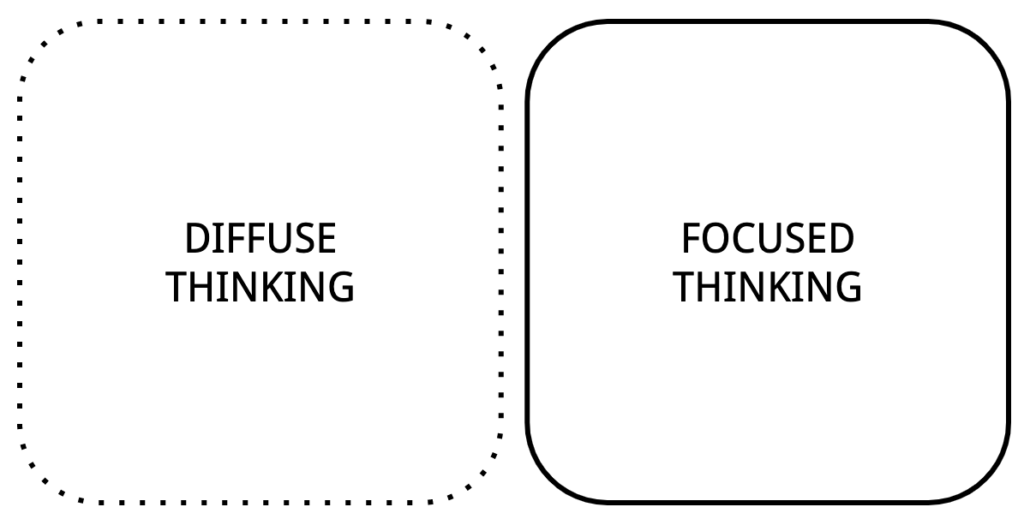“Sorry, I spaced out, what were you saying?” you ask your friend. It has happened to all of us: we are physically in place, while our mind is in another one. Mind wandering, while it can take many forms, is an experience of thought shared by all of humanity. Some people see it as a negative habit that must be controlled; others as a creative necessity. The truth, as often, is more balanced: there is an art and science to mind wandering.
Mind wandering through the ages
While we may think we are in control of our mind, many thoughts, feelings and images fill our consciousness without any active thinking on our part. And this is not a new phenomena: researchers at the University of Oslo found that our minds have been wandering for at least more than two thousand years—which is the further they could go to study ancient literary texts. From Buddhism scholars to Christian ascetics, humans have been seeking the right balance between focused thinking and mind wandering.
But it wasn’t until the 1960s that the first scientific studies were conducted on mind-wandering. John Antrobus and Jerome L. Singer Center for Research in Cognition and Affect in New York City developed a questionnaire to study the experience of mind-wandering and daydreaming. “The capability of mind wandering involves constantly retrieving a large number of items of information about one’s past and one’s future. If our cognitive system operated like a well-disciplined computer, it would stick to one goal at a time and not change to a new problem until the old problem was solved,” they write.
The questionnaire, called the Imaginal Processes Inventory, assesses the experience of mind wandering on three dimensions: how vivid the person’s thoughts are, how deep into the thought a person goes, and how many of those thoughts are based on guilt or fear.
It includes statements such as “A really original idea can sometimes develop from a really fantastic daydream”, “I tend to be easily bored”, “My daydreams often leave me with a warm, happy feeling”, or “I have difficulty in maintaining concentration for long periods of time.” If you are curious, the University of Berkeley has published a short version of the inventory.
Further research in the 1980s, psychologist Eric Klinger of the University of Minnesota found that most mind wandering and daydreaming is about ordinary, everyday events, which often reflect current concerns. His research also found that over 75% in jobs such as lifeguards and truck drivers—which involve long periods of time without any intellectual stimulation—use mind wandering to ease their boredom.
So what exactly is going on inside our brain when our mind wanders? Is mind wandering so common because it is actually useful?
The neuroscience of mind wandering
Mind wandering neuroscience research seeks to understand how the brain generates the relatively unconstrained—almost spontaneous—thoughts that are experienced by people when their mind wanders. The most popular candidate for what is causing this state is the default mode network, which is a large scale brain network. (what we call large scale brain networks are widespread brain regions that show functional connectivity when we perform statistical analysis on brain scanners, which means they tend to “work together”)
Your executive system is highly active when you are focused on a goal-oriented task. On the other hand, the default mode network is highly active when you close your eyes and are at rest. It’s mostly active when we are not focused on the outside world, but also when we think about ourselves, about others, when we remember the past, and when we plan for the future.
The term “default mode” was coined by neurologist Marcus E. Raichle’s lab at Washington University School of Medicine in 2001 to describe the resting state function of our brain. The fact that this “resting state” involves so much activity suggests that the brain is constantly busy. See this image, which shows the main regions of the default mode network in yellow, and the connectivity between the regions as multicoloured strings.

So, when our mind wanders, the default system gets activated. We are not focused on the outside world, we just let our brain generate spontaneous thoughts based on mundane information about ourselves, others, our past, and our future. We experience what some people call a stream of consciousness. We could stop here in our explanation, but things are not so simple.
Some researchers have found that mind wandering is not exactly the same as just resting: when our mind wanders, both the default mode network and our executive system are highly active. Does that mean our mind is both at rest and hyper focused? Is mind wandering actually goal oriented?
A constant mental oscillation
Have you ever had a shower thought? It’s very common to spend a lot of time and energy to try cracking a problem, only to suddenly find a solution—seemingly out of nowhere—when we least expect it. This is because our minds constantly oscillate between two modes of thinking: focused and diffused.
Pr Barbara Oakley, who created the most popular free online course in the world (Learning how to learn) coined the terms focused thinking and diffuse thinking. Together, these two modes of thinking allow us to combine creativity and productivity, getting the best of both worlds.
Focused thinking is when we work hard to understand a problem at hand. We go into the details, we do some research, we actively explore potential solutions. As you have probably noticed through your personal experience, focused thinking has a high cognitive load, which makes it hard to maintain over a long period of time.
Diffused thinking is when we let our mind wander, which we sometimes call daydreaming. Shower thoughts are a typical result of such a relaxed state. When you are in the shower, you don’t think about nothing. While you are not actively trying to address a problem, your mind is busy making connections in the background.

Diffused thinking may not seem to be a goal-oriented experience, but it very much is. The difference with focused thinking is that we are not consciously steering the wheel. Both focused and diffused thinking are essential to be creative and productive. You just need to learn how to make the most of them both.
Directed distraction
As with many cognitive or emotional states, the state itself is not inherently “good” or “bad”—it’s what we make of it that matters. Mind wandering can be a distraction, especially when we are procrastinating, but it can also be directed to achieve your goals.
- Accept your mental oscillations. As we discussed, it is not possible to stay in a focused mode all the time. To achieve your goals, your mind needs to oscillate between focused and diffuse modes of thinking. Instead of waiting until your mental energy is completely depleted, schedule reasonably short sessions for focused work.
- Take conscious breaks. Instead of letting your mind wander whenever you feel tired, block time to let your mind wander. Great ways to let your mind wander include going for a walk, taking a shower, cooking a simple meal, and any other activities that don’t require you to be focused.
- Deal with negative mind wandering. Research shows that people with anxiety disorders or depression may experience negative thoughts while mind wandering. If this is your case, try meditation or breathwork to observe these negative thoughts in a non-judgemental way without getting out of your diffused mode of thinking.
Mind wandering is a beautiful ability, which is still poorly understood. Many artists report having found inspiration in daydreams. Instead of rejecting it as a source of distraction, mind wandering should be used as a tool we need to learn how to use properly in order to maximise our creativity and productivity.
